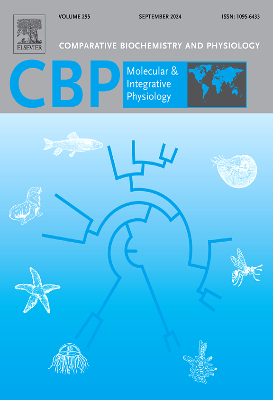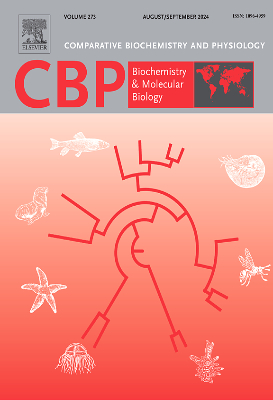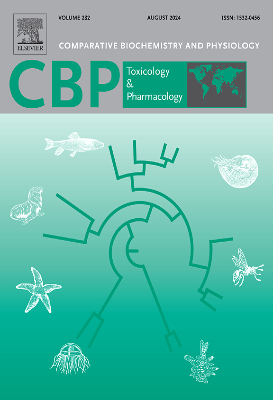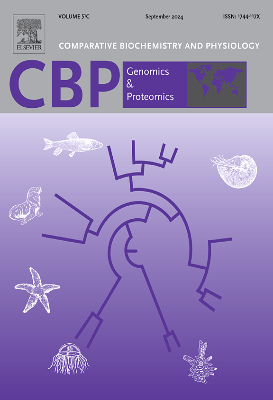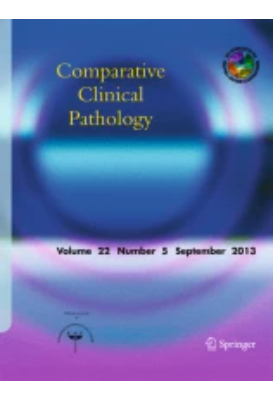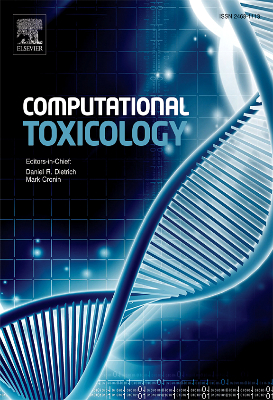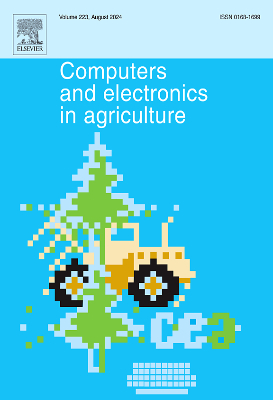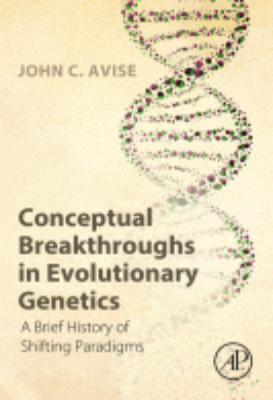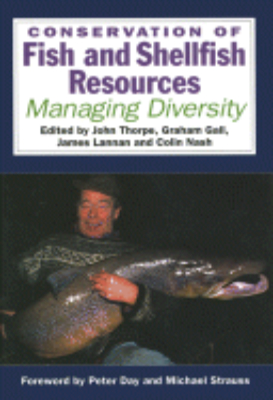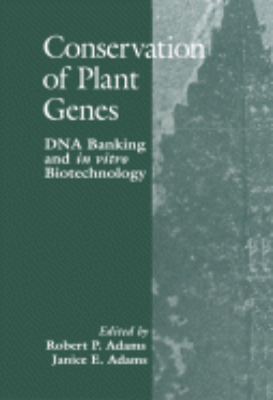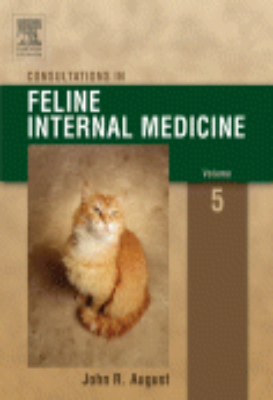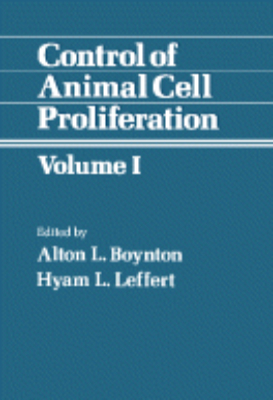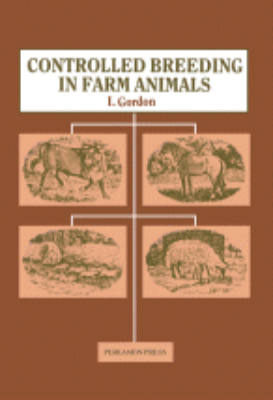E-Resources
Comparative Biochemistry of Parasites
Comparative Biochemistry of Parasites contains the proceedings of an international symposium organized by the Janssen Research Foundation and held at Janssen Pharmaceutica in Belgium on September 1-3, 1971. The symposium reviewed progress in the understanding of the physiology and biochemistry of parasites such as protozoa and helminths. Organized into 34 chapters, this volume begins with an overview of early research on parasite biochemistry before turning to a discussion of antischistosomal drugs and their biochemical effects on parasites. The reader is then introduced to the biochemistry of carbohydrates in nematodes and cestodes; neurotransmitters in trematodes; pharmacological aspects and biochemical effects of tetramisole; the mechanism of action of berenil (Diminazene) and related compounds; and dihydrofolate reductases in parasitic protozoa and helminths. Other chapters focus on the loss of fatty acid biosynthesis in flatworms, the cytochrome system in Kinetoplastidae, oxidative phosphorylation in Moniezia mitochondria, and the role of non-heme iron in cestode respiration. Scientists, particularly physiologists and biochemists, will find this book an invaluable source of information on parasite physiology and biochemistry.
Comparative Biochemistry: Volume 1 1960
Comparative Biochemistry: A Comprehensive Treatise, Volume I: Sources of Free Energy focuses on the desire to provide a sound, critical, and provocative summary of knowledge in comparative biochemistry, including thermodynamics, biological systems, oxidation, visual systems, and aerobic and anaerobic reactions of inorganic substances. The selection first offers information on the introduction to comparative biochemistry and thermodynamics of living systems. Discussions focus on comparative point of views in biology and biochemistry, classical thermodynamics, reaction rates in chemical and biological systems, and thermodynamics of open systems. The text then ponders on comparative mechanisms for fatty acid oxidation; phosphoric acid anhydrides and other energy-rich compounds; and onium compounds and their biological significance. The publication examines phototropism and phototaxis and distribution and evolution of visual systems. Topics include phototropism in plants, analysis of phototropic reaction, nature of photoreceptors, role of auxin in phototropism of plants, visual systems of vertebrates, and habitat relations. The book also tackles aerobic and anaerobic reactions of inorganic substances and comparative biochemistry of glycolysis. The selection is a dependable source of data for readers interested in the sources of free energy.
Comparative Biochemistry: Volume 2 1960
Comparative Biochemistry: A Comprehensive Treatise, Volume II: Free Energy and Biological Function focuses on methodologies, processes, and mechanisms involved in the biological transformations of energy. Composed of contributions of various authors, the book first discusses free energy and the biosynthesis of phosphates. The thermodynamics of phosphoryl and phosphate transfer reactions; enzymatic synthesis of phosphates; and phosphoryl transfer sequences in metabolism are considered. The selection also looks at the utilization of free energy in the biosynthesis of saccharides, proteins, and peptides; ammonia metabolism; and biosynthesis of urea. The book also describes muscular contraction. The structure of myofibril; protein components of myofibril; localization of myofibrillar components; contraction of adenosine triphosphate; and adenosine triphosphatases of muscles are discussed. Other mechanisms that produce movements are also noted. The text ends with discussions on experiments on active transport, balance of electrocytes and water, mechanisms of osmoregulation, bioluminescence, and nerve conduction and electrical discharge. The book is a good source of data for readers interested in studying free energy.
Comparative Biochemistry: Volume 3 1962
Comparative Biochemistry: A Comprehensive Treatise, Volume III: Constituents of Life Part A focuses on the processes, methodologies, and mechanisms involved in the biological transformations of matter. Composed of contributions of authors, the book first gives emphasis to the comparative features of fatty acid occurrence and distribution. The formation of fatty acids and lipids in living organisms; naturally occurring fatty acids and lipids; relationship between types and distribution of fatty acids and their biological origin are considered. The text also looks at the structure and distribution of sterols, steroid metabolism of lipids, and the distribution and metabolism of phospholipids. The book focuses as well on the structure and occurrence of natural monosaccharides and oligosaccharides. The occurrence of commoner monosaccharides and oligosaccharides; the compositions, reactions, and characteristics of nucleosides, nucleotides, and nucleic acids; and chromatographic examinations of biological materials for free sugars are considered. The text also looks at the structure, metabolism, and distribution of terpenoids and quinones. The book is a vital source of information for readers wanting to study the processes, methodologies, and mechanisms involved in the biological transformation of matter.
Comparative Biochemistry: Volume 4 1962
Comparative Biochemistry: A Comprehensive Treatise, Volume IV: Constituents of Life Part B focuses on the distribution, biogenesis, and metabolism of cells and organisms. Composed of various literature, the book first looks at the optical asymmetry of metabolites. The natural occurrence of D-amino acids and L-sugars; significance of purity; optical asymmetry and protein structure; and the relationship of optical asymmetry and cancer are discussed. The text also discusses structural studies on cellulose, starch, and glycogen; biochemistry of lignin formation; structure and localization of nucleic acids; and intraspecific and interspecific variations of protein molecules. The book considers the metabolism of aromatic amino acids, structural and chemical properties of keratin-forming tissues, sclerotization, and blood coagulation. The text further discusses metamorphosis and biochemical adaptation in amphibians. The importance of intrinsic tissue sensitivity in tadpoles; comparative morphological alterations; and the increase in serum albumin and serum protein are considered. The book focuses as well on the structure, distribution, and metabolism of porphyrins, pteridines, and carotenoids. The selection is a good source of data for researchers wanting to study the distribution, biogenesis, and metabolism of cells and organisms.
Comparative Biochemistry: Volume 5 1963
Comparative Biochemistry: A Comprehensive Treatise, Volume V: Constituents of LifePart C focuses on the structure and distribution of amino acids, distribution and metabolism of inorganic nitrogen compounds, acid metabolism, and comparative biochemistry of halides. The selection first offers information on the structure and distribution of amino acids and the distribution and metabolism of inorganic nitrogen compounds. Discussions focus on proteinogenous amino acids, nonproteinogenous amino acids, general aspects of inorganic nitrogen metabolism, and distribution and metabolism of nitrate, nitrite, and molecular nitrogen, ammonia, and hydrazine. The text then tackles citric acid cycle and other cycles and comparative biochemistry of collagen. The publication examines photosynthesis and halides. Topics include transfer of energy along the photosynthetic chain, carbon dioxide reduction, photosynthesis and phosphorylation, quantum yields and the efficiency of light energy conversion, chlorine, bromine, and iodine. The selection is a dependable source of data for readers interested in the constituents of life.
Comparative Biochemistry: Volume 6 1964
Comparative Biochemistry: A Comprehensive Treatise, Volume VI: Cells and Organisms focuses on the complex composition of cells and organisms. The book opens with discussions on the biochemistry of morphogenesis. Bacterial germination and sporulation; seed germination; egg development of sea urchins; sporulation of cellular slime mold; and amphibian differentiation are described. The volume looks at the comparative aspects of metabolic control, biochemical basis of chemical needs, biochemistry of insect metamorphosis, and hormones in invertebrates. The text also highlights the presence of protein hormones in vertebrates. The differences between neurohypophyseal and melanocorticotropic hormones are identified. The book ends with discussions on the comparative biochemistry of digestive mechanisms and detoxication. Digestion in special physiological and systematic groups of vertebrates, carnivorous plants, and invertebrates; detoxication and adoption of terrestrial habitat; and the developmental aspects of detoxication are discussed. The book is a good source of data for readers wanting to explore the complex composition of organisms and cells.
Comparative Biochemistry: Volume 7 1964
Comparative Biochemistry: A Comprehensive Treatise, Volume VII: Supplementary Volume focuses on the processes, methodologies, and approaches involved in molecular biochemistry. The selection first offers information on expressions of the pentose phosphate cycle, including description, criteria for the presence of the pentose phosphate cycle, chordates, segmented worms, mollusks, echinoderms, roundworms, flatworms, algae, and higher plants. The text then ponders on chitin and mucosubstances, as well as the distribution and biochemistry of chitin, molecular structure and function of chitin, and chitin in relation to mucosubstances. The publication reviews the cellular aspects of active transport and hormones and behavior. Topics include relations between inorganic ions, sugar, amino acids, fatty acids, and bioelectric potentials; aspects of the regulation of the intracellular pool of free amino acids; hormones and permeability characteristics of living cellular membranes; and chemical nature of the structure responsible for the permeability characteristics of living membranes. The recording and measurement of behavior, role of hormones in the patterning of behavior, and hormones influencing behavior and the behavior most subject to hormonal influence and control are also discussed. The selection is a dependable source of data for readers interested in the processes, methodologies, approaches involved in biochemistry.
Comparative Nutrition of Man and Domestic Animals
Comparative Nutrition of Man and Domestic Animals, Volume I discusses practical phases in the evaluation of the nutrient requirements of man and his domesticated animals and the factors that modify these quanta. This book also covers various nutrients' biochemical nature, functions, and participation in the energy transactions of the body. Organized into 11 chapters, the book initially discusses the principles of the basal metabolism and the activity increment and their role in evaluating maintenance requirement of human and animal for energy. The subsequent chapter focuses on the maintenance requirement of protein under stress and non-stress conditions. Other chapters discuss nutrient requirements for maintenance, such as water and minerals. The book also examines the nutrient requirements for muscle activities, growth, senescence, reproduction, and lactation. A discussion on the storage of nutritive material, such as water, protein, minerals, vitamins, and energy, is included. This volume is an invaluable source for organic chemists, biochemists, animal physiologists, zoologists, and nutritionists.
Conceptual Breakthroughs in Evolutionary Genetics
Conceptual Breakthroughs in Evolutionary Genetics is a pithy, lively book occupying a special nichethe conceptual history of evolutionary genetics not inhabited by any other available treatment. Written by a world-leading authority in evolutionary genetics, this work encapsulates and ranks 70 of the most significant paradigm shifts in evolutionary biology and genetics during the century-and-a-half since Darwin and Mendel. The science of evolutionary genetics is central to all of biology, but many students and other practitioners have little knowledge of its historical roots and conceptual developments. This book fills that knowledge gap in a thought-provoking and readable format. This fascinating chronological journey along the many conceptual pathways to our modern understanding of evolutionary and genetic principles is a wonderful springboard for discussions in undergraduate or graduate seminars in evolutionary biology and genetics. But more than that, anyone interested in the history and philosophy of science will find much of value between its covers.
Conservation of Fish and Shellfish Resources
"Fish and shellfish comprise annually nearly 70-million tons of the world's edible animal protein. However, because of this demand, previously vast stocks have often been exhausted to the point of near extinction. The first book of its kind in the area of freshwater/marine biodiversity, this extensive work reviews the present status of genetic resource management, its needs and constraints, various intervening human factors such as pollution and overfishing, and problems posed by different species and life-styles. This discussion of the conservation of fish and shellfish resources is illustrated by four diverse groups: Atlantic salmon, cupped oysters, common and Chinese carp, and Nile tilapia. These results, produced by the collaboration of nine leading population and production geneticists, aquaculturists, and behavioral and developmental ecologists should become a fundamental resource useful to biologists, scientists and advisors exploring current issues in the fishery sciences. Key Features. Four page color plate section. Database of key organizations for contact purposes. Foreword by Dr. Mike Strauss, Am. Assoc. for the Advancement of Science; and Dr. Peter Day, Rutgers University. Four in-depth case studies by international experts. Editors are major names in marine/freshwater fisheries science. Originally sponsored and reviewed by U.S. National Academy of Sciences"
Consultations in Feline Internal Medicine
An invaluable addition to every small animal clinician's library, this resource investigates the latest topics and therapies in feline internal medicine such as neurogenic micturition disorders, chronic rhinosinusitis, feline asthma, osteoarthritis and geriatrics, obesity and its health consequences, shelter medicine, overpopulation, cruelty toward cats. Includes new, full-color illustrations throughout!
Contemporary Problems in Plant Anatomy
Contemporary Problems in Plant Anatomy contains the proceedings of a plant anatomy symposium that took place at Duke University and The University of North Carolina at Chapel Hill in 1983. The symposium addressed challenges in four basic research areas in contemporary plant anatomy: leaf development, floral development, differentiation of cells and tissues, and systematic and ecological anatomy. The book highlights new techniques and approaches for dealing with problems in each of these areas. Organized into 12 chapters, this volume begins with an overview of the stem-conducting tissues in monocotyledons; the development of vascular tissue patterns in the shoot apex of ferns; the role of subsidiary trace bundles in stem and leaf development of the dicotyledoneae; and the structure of phloem. It then discusses the cellular parameters of leaf morphogenesis in maize and tobacco; alternative modes of organogenesis in higher plants; morphological aspects of leaf development in ferns and angiosperms; the origin of symmetry in flowers; and intraspecific floral variation. The reader is also introduced to structural correlations among wood, leaves, and plant habit; relationships between structure and function in trees; and the development of inflorescence, androecium, and gynoecium with reference to palms. This book is a valuable source of information for plant anatomists.
Control and Manipulation of Animal Growth
Control and Manipulation of Animal Growth explores the development and growth of animals. The reproductive system of animals is also discussed, along with how its development can be accelerated. The topic is presented using various studies by the authors together with a number of references to other books and studies. This book contains 20 chapters and revolves around the advancement of an animal's growth hormone. It explains how gender plays a part in an animal's development and talks about factors that can affect the process, such as environment, temperature, and food intake. This book also discusses bone growth, fetal growth, metabolism, factors of epidermal growth, growth manipulation, growth hormones, hormonal manipulation, and the effect of insulin. This text covers a wide range of facts and investigations and can therefore serve as an excellent reference for people who want to study an animal's internal and external development.
Control of Animal Cell Proliferation: Volume I 1985
Control of Animal Cell Proliferation, Volume I presents how animals regulate their proliferation activity and how cells become proliferatively autonomous resulting in malignant behavior. This book provides an understanding of mechanisms that control animal cell proliferation. Organized into five parts encompassing 17 chapters, this volume begins with an overview of the efforts to elucidate he genetic alterations that lead normal cells to become cancer cells, which have been aided considerably by the investigation of acute retroviruses. This text then examines the factors involved in growth control. Other chapters describe in detail the biology and biochemistry of epidermal growth factor (EGF), which have been elucidated through the study of cultured human fibroblasts. This book discusses as well the protein kinases with specificity for tyrosine. The final chapter deals with regulation of initiation of eukaryotic protein synthesis by phosphorylation. This book is a valuable resource for scientists as well as cellular and molecular biologists.
Control of Animal Cell Proliferation: Volume II 1987
Control of Animal Cell Proliferation, Volume II discusses how animal cells become proliferatively autonomous, which results in malignant behavior. This book begins with trends and issues on membrane structure and teratocarcinoma research. The structure and function of several growth factors and their receptors such as thrombin, transferrin, glucocorticoid, and B and T cell factors are also discussed. This text likewise covers the mechanism of information transduction that includes intracellular pH and calcium. The aspects of genome organization and gene transcription are deliberated in the last chapters. This publication provides biologists and students with a coherent picture of cell proliferation.
Controlled Breeding in Farm Animals
This textbook provides a detailed view of the different ways in which reproduction in cattle, sheep, pigs and horses can be controlled and manipulated. It is primarily of interest to students of animal science and veterinary medicine, but will also be of use to those who are concerned with the practical aspects of reproduction control, whether in an advisory capacity or in applying techniques on the farm itself. A major objective of the book is to draw attention to information which may be used directly to increase the efficiency of the livestock industry.

